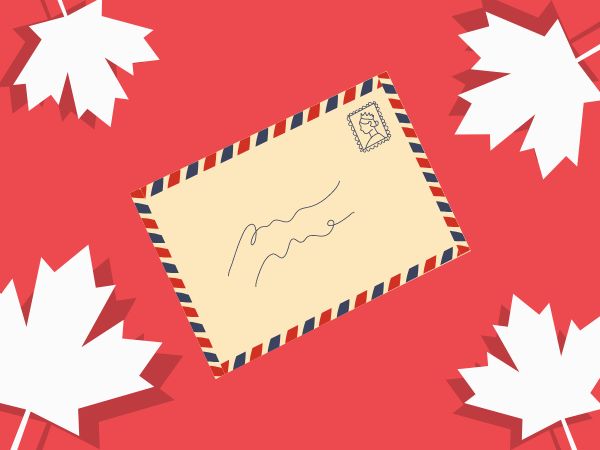Sending a letter is one of the most reliable ways to keep in contact with friends and loved ones overseas and enables the sender to include so much more than words. Whether it’s sentiments of love, friendship or simply good wishes, the written word is a fantastic way to get in touch and to stay in touch, wherever you are in the world. And if you know someone who is lucky enough to live in calm and cultural Canada and you want to take the traditional route of chatting with them by letter, then this is the place to look! Send a letter to Canada, and be assured that it will get through to the right person and the right place, by using our quick and easy guide.
If you’re looking for the quickest and easiest way to send a real letter to Canada, let us do the heavy lifting. With e-Snail, you can send a physical letter to anywhere in the world.
Canada Address Format
If you want your letter to Canada to arrive at its destination quickly and in one piece, then taking care of how you format the address on the envelope is very important. Although similar to the UK, Canada Post does have its own requirements when it comes to address formatting.
Firstly, the address needs to be started in the centre of your envelope leaving plenty of space below and above for further information. The whole address should be written in capital letters.
Secondly, Canadian mailing addresses are more detailed and must be set out as shown below.
- The first and last name of the recipient of your letter. Include their title if possible, and insert any company, hotel or department name under that of the individual.
- The next line should include begin with the apartment or unit number. Next, and still on the same line, there should be a hyphen followed by the street or road address.
- This new line needs to include the city, leave 1 space, the province or territory, leave 2 spaces, and then the postcode.
Finally, write the name of the country on your last line.
When you’re finished, the address on your envelope should look something like this:
Canada Abbreviations and Codes
Just as a title such as Mr or Mrs should be used when addressing letters for the Royal Mail, the same applies in Canada. And to make things super-easy, you would use exactly the same ones as we do here in the UK – Mr, Mrs, Ms, Miss or Dr!
Canada is the second largest country in the world by land mass and is split into 13 different provinces and territories, each of which has its own unique 2-letter code as listed below.
| Province/Territory | Abbreviation |
|---|---|
| Alberta | AB |
| British Colombia | BC |
| Manitoba | MB |
| New Brunswick | NB |
| Newfoundland and Labrador | NL |
| Nova Scotia | NS |
| Nunavut | NU |
| Ontario | ON |
| Prince Edward Island | PE |
| Quebec | QC |
| Saskatchewan | SK |
| Yukon | YK |
Prohibited and Restricted Items
Canada prides itself on being a safe, environmentally friendly and ‘clean-living’ country, so the list of restricted and prohibited items it protects its citizens from is rather a long one!
It is strictly prohibited to post articles which are indecent, obscene, immoral or scurrilous and information and articles relating to any form of fraud or gambling including unlawful lottery schemes and chain-letters. Used bee-keeping equipment, contraceptive devices and literature, counterfeit or imitation coins, corrosives, nuclear substances and oxidising substances, any combustible or flammable liquids, solids or gases, gold bullion, any alcoholic beverages, live animals, metallic labels, firearms, weapons and ammunition, prison-made goods and margarine or butter substitutes are also included as being illegal to send through the mail.
When it comes to restricted items, the list includes currency, copyrighted works, films, tobacco, medical materials including specimens, dead animals including wild birds and their parts, rough diamonds and controlled substances including drugs. With regard to food, eggs, milk and dairy products, fish, game, meat, poultry, vegetables and fruit and their products, seed potatoes, onions and other raw root crops and barley, chaff, bran, wheat, straw and their products are all controlled when entering Canada.
Conclusion
So, now you have the knowledge to make sure it gets to who and where you want it to and what you can actually put in it to avoid getting a call from Customs, you’re all ready to get writing a letter to Canada. Just remember to use this guide for the correct way to write and format the mailing address and ensure that all prohibitions or restrictions are adhered to!
Don’t forget, you can also use e-Snail to easily send a real letter online to anywhere in the world.




